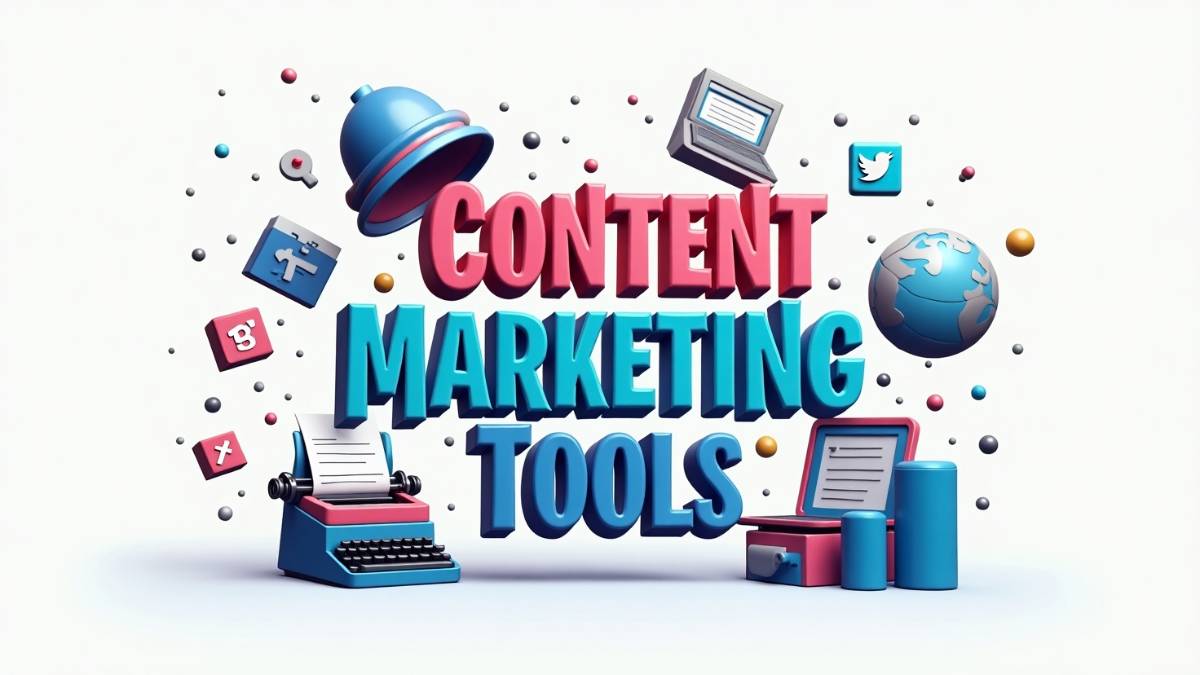Let’s be honest – content marketing is no longer just about writing blogs or posting on social media. It’s a structured process that includes research, planning, creating, distributing, and optimizing content to grow a brand or business.
Table of Contents
And here’s the truth:
Even the best content ideas can fail if they’re not supported by the right tools and systems.
Whether you’re a solo content creator, a freelancer juggling clients, a marketer in a growing startup, or part of a full-blown agency, your tech stack plays a huge role in how efficiently and effectively you can get results.
This blog is your go-to guide to the 25 best content marketing tools in 2025, organized by use case. From planning to publishing to performance tracking — we’ve got you covered.
What is Content Marketing?
Content marketing is a way for businesses to share useful information that helps people, instead of just selling to them. This could be through blog posts, videos, emails, or even social media content. The goal is to answer real questions, solve problems, and build trust over time. For example, a fitness brand might post workout tips or healthy recipes—not just product ads. A tech company might explain how to use their software better through how-to videos. Good content marketing doesn’t push people—it helps them. And when you do that well, people remember your brand and are more likely to buy from you when they’re ready.
Section 1: Tools for Planning & Strategy
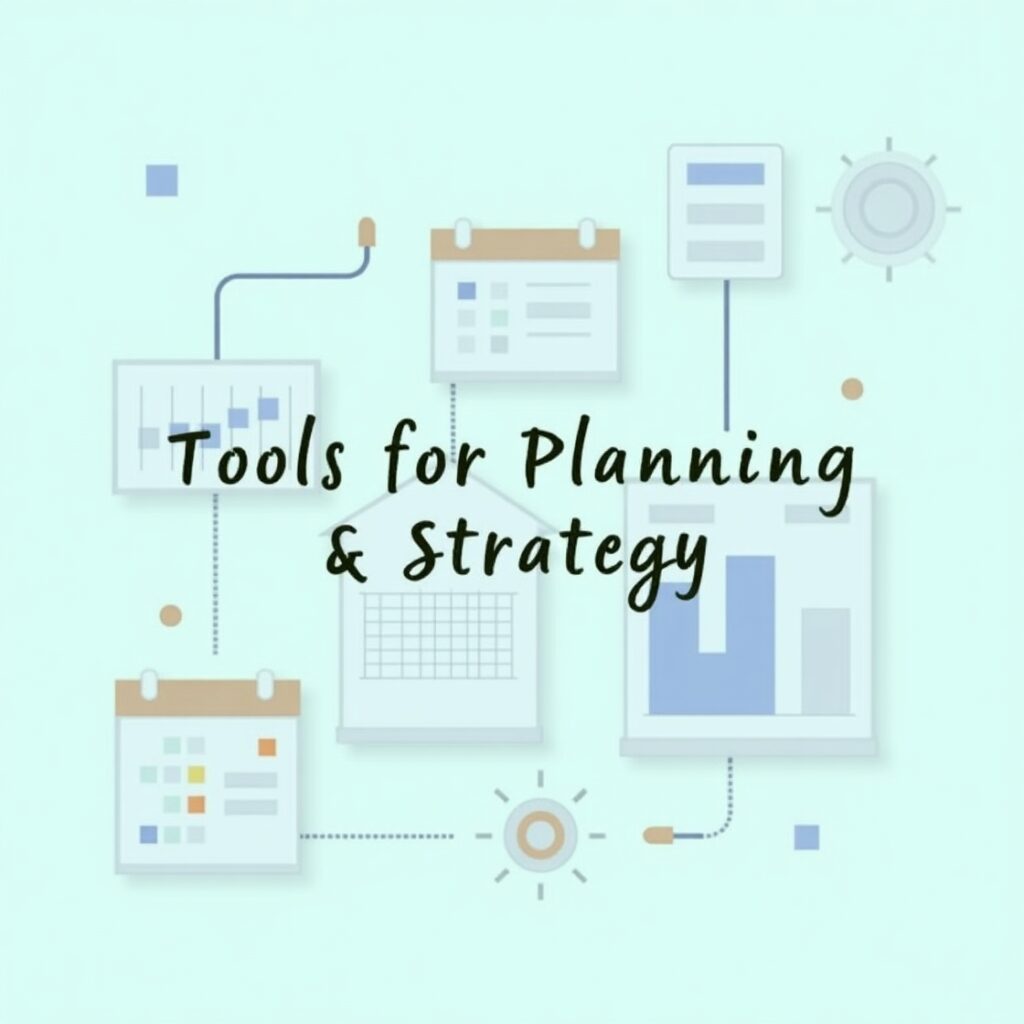
“Laying the foundation before you create content.”
Before you jump into creating content, you need to have a game plan. What are you creating? Who is it for? What’s the goal? That’s where strategy and planning tools come in.
Here are 5 tools to help you plan smarter:
1. Trello
A simple drag-and-drop project management tool. Perfect for building content calendars, assigning tasks, and keeping an eye on deadlines.
Why it’s useful:
- Visual boards make it easy to track progress
- Great for teams or even solo creators
- You can label posts by type, status, or platform
Pro Tip: Set up a Trello board for every month with “To Plan”, “In Progress”, “Scheduled”, and “Published” columns.
2. Airtable
Think of it as spreadsheets on steroids. It combines the familiarity of Excel with the flexibility of a database.
Why content teams love it:
- Customize workflows for blogs, emails, videos, and more
- Add attachments, assignees, dates, and status updates
- Great for managing complex content strategies with multiple people
3. Feedly
If you’re stuck on what to write about, Feedly can help. It lets you follow blogs, websites, and trends from around the internet in one place.
Use it for:
- Tracking industry trends
- Finding viral topics in your niche
- Spotting newsworthy angles for content
4. Notion
All-in-one workspace for organizing your content strategy, team documentation, ideas, and even templates.
Best for:
- Centralizing your content marketing knowledge
- Keeping SOPs (standard operating procedures) in one place
- Collaborative brainstorming with your team
5. Answer the Public
Type in a keyword, and this tool gives you the questions real people are asking around it.
Why it’s gold:
- Helps you create content that directly answers what your audience is Googling
- Useful for SEO-focused blogs and video scripts
- Visualizes data in easy-to-use clusters
Also Read: What is Content Marketing in Digital Marketing?
📝 Tip Box:
Set up a centralized content calendar using Trello or Airtable, and build shared workflows. This makes it easier to plan ahead, collaborate with your team, and ensure no deadlines are missed.
Also Read: 15 Best WhatsApp Marketing Software Tools
Section 2: Tools for Content Creation & Editing
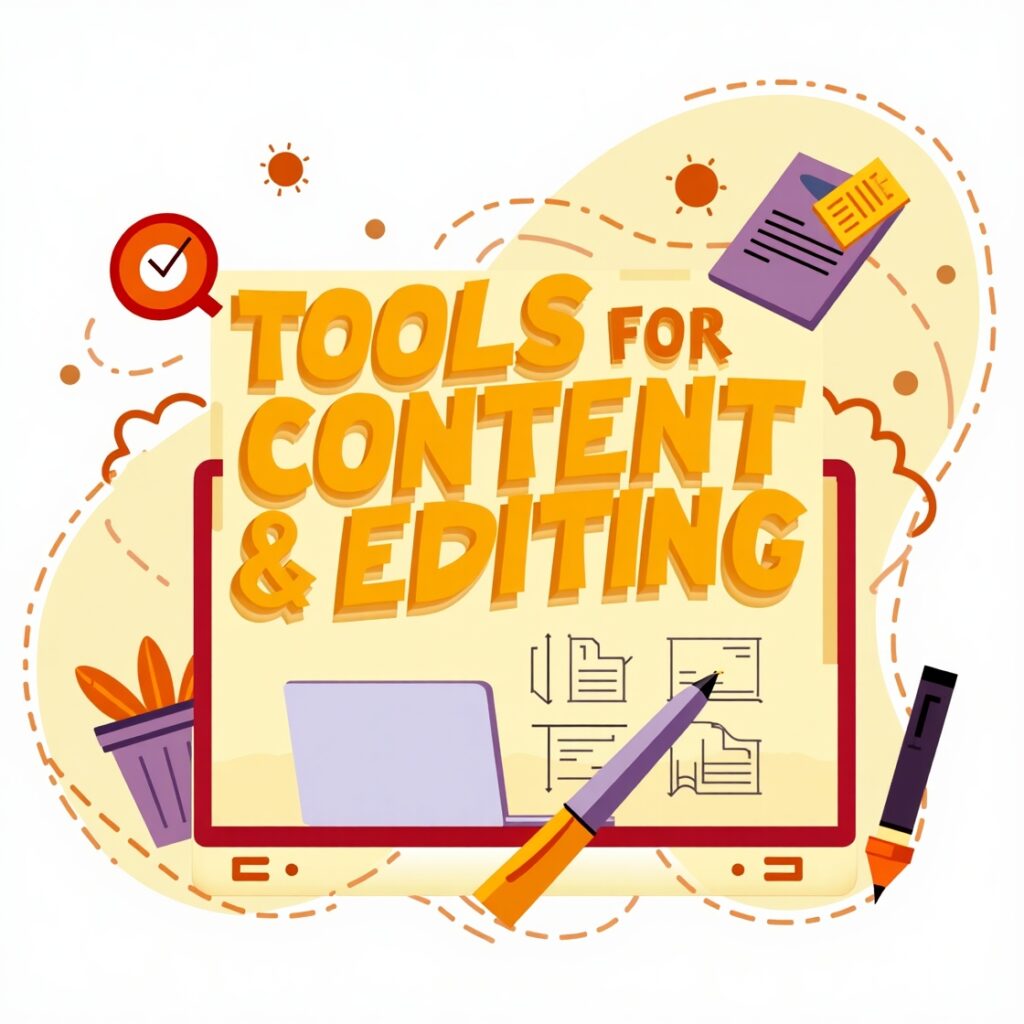
“Turning ideas into high-performing pieces of content.”
Once your content plan is ready, it’s time to build the actual content. Whether it’s blogs, social media posts, visuals, or videos, these tools help you produce great work faster.
Here are 5 tools every content creator should be using in 2025:
6. WordPress
Still the most popular CMS (content management system) out there. Whether you’re starting a blog or managing a company website, WordPress gives you control and flexibility.
What’s great about it:
- Easy to use even for beginners
- Tons of SEO and marketing plugins available
- Scalable from small blogs to full websites
7. Canva
Graphic design made easy. Even if you’re not a designer, Canva helps you create stunning visuals for social media, blog covers, carousels, videos, and more.
Why it’s a must-have:
- Huge template library
- Drag-and-drop interface
- Team collaboration features and brand kits
8. Grammarly
Think of it as your personal editor. Grammarly checks for spelling, grammar, tone, and clarity — making your content easier to read and more professional.
Bonus: The browser extension works across Google Docs, WordPress, and email too.
9. Hemingway App
Want your writing to be clearer and more powerful? Hemingway highlights long or complex sentences and suggests simpler alternatives.
Use it when:
- Writing blog posts
- Drafting emails
- Creating easy-to-read copy for broader audiences
10. Vidyard
Personalized videos are on the rise. Vidyard lets you record and share quick videos — ideal for LinkedIn content, outreach, or adding a human touch to your messaging.
Use Cases:
- Product demos
- Thought-leader videos
- One-on-one content pitches
Also Read: Top 30 AI Tools for Digital Marketing
Section 3: Tools for Distribution & Promotion
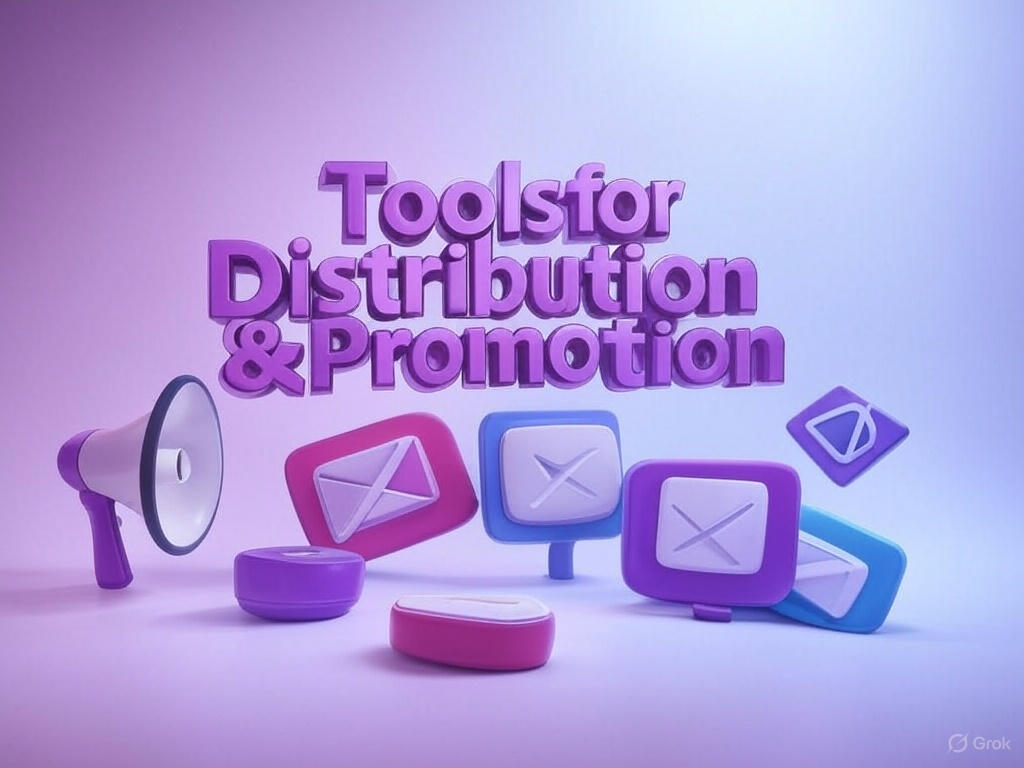
“Because even the best content won’t work if nobody sees it.”
So, your content is ready. Great! But now what? If you don’t actively put it in front of people, it won’t get the views or engagement it deserves. This is where distribution tools come in — they help you post, share, and automate delivery.
Here are 5 tools that help make sure your content reaches the right eyeballs:
11. Hootsuite
If you’re managing multiple social media accounts, Hootsuite makes your life easier. You can schedule posts, reply to comments, and check basic analytics — all from one dashboard.
Who it’s good for:
- Agencies or teams managing several brands
- Solo creators who want to stay consistent
- Marketers who need to monitor mentions or hashtags
12. Buffer
Buffer is a lighter, simpler option than Hootsuite. If you just want to schedule posts for Instagram, LinkedIn, or Twitter without too many bells and whistles — Buffer is solid.
Why it works:
- Clean interface
- Quick scheduling
- Link-in-bio tool for Instagram
Small teams often prefer Buffer because it’s less overwhelming and more affordable.
13. Mailchimp
If email marketing is part of your content strategy (and it should be), Mailchimp is a great place to start. It’s beginner-friendly, offers ready-made templates, and even has basic automation built in.
Good for:
- Sending newsletters
- Building a subscriber list
- Running basic drip campaigns
14. HubSpot
A much bigger platform — not just for email, but for blogging, CRM, social media, and lead generation too. If you’re running a content-led business or a startup that wants to scale, HubSpot offers everything under one roof.
Things to love:
- Smart email personalization
- Landing page builder
- Detailed analytics dashboards
It’s more advanced than Mailchimp — and yes, it’s more expensive — but the features are top-notch.
15. ConvertKit
Built specifically for creators, ConvertKit lets you create email sequences, tag your audience, and sell digital products or newsletters.
It shines for:
- YouTubers, writers, indie creators
- Selling ebooks, courses, or paid subscriptions
- Creating simple, beautiful landing pages
Also Read: 52 Best Affiliate Marketing Tools
Section 4: Tools to Analyze & Optimize Content Performance

“You can’t grow what you don’t measure.”
If you’re not tracking how your content is performing, you’re shooting in the dark. Analytics tools help you understand what’s working, what’s not, and what to do next.
Let’s look at five solid tools that help with this:
16. Google Analytics
Still the gold standard for website traffic. You can track where your visitors are coming from, what pages they visit, and how long they stay.
Use it to:
- See which blog posts get the most views
- Understand bounce rates and session time
- Track conversions (like email signups)
Tip: Connect Google Analytics to your content calendar. See which topics are driving results — and do more of those.
17. VWO (Visual Website Optimizer)
A robust platform for A/B testing, multivariate testing, heatmaps, and conversion rate optimization — ideal for improving website content and landing page performance.
Why it’s worth using:
- Easy visual editor for non-coders
- Run A/B, split, and multivariate tests
- Offers behavioral insights with heatmaps and session recordings
- Integrates with most major CMS and analytics platforms
Great choice for teams that want to test different versions of content or design before scaling.
18. Ahrefs
Ahrefs is a powerful tool for SEO research and content audits. It tells you what keywords your site ranks for, who’s linking to you, and what your competitors are doing.
Why marketers love it:
- Detailed keyword data
- Easy content gap analysis
- Backlink monitoring
If you’re doing long-form or evergreen content, Ahrefs is an investment worth making.
19. BuzzSumo
Great for figuring out what content is trending in your industry. Just type in a topic and see the most shared articles and who wrote them.
Helpful for:
- Getting headline ideas
- Finding influencers to partner with
- Studying what kind of content performs well on each platform
20. SEMrush
Another all-in-one tool, similar to Ahrefs, but with added features for PPC and technical audits.
What stands out:
- On-page SEO audit
- Competitor tracking
- Position tracking over time
SEMrush also has a content template tool that suggests keywords, word count, and backlinks — very handy when writing for SEO.
Also Read: Top Performance Marketing Tools to Maximize ROI
Section 5: 5 Underrated Tools to Level Up in 2025
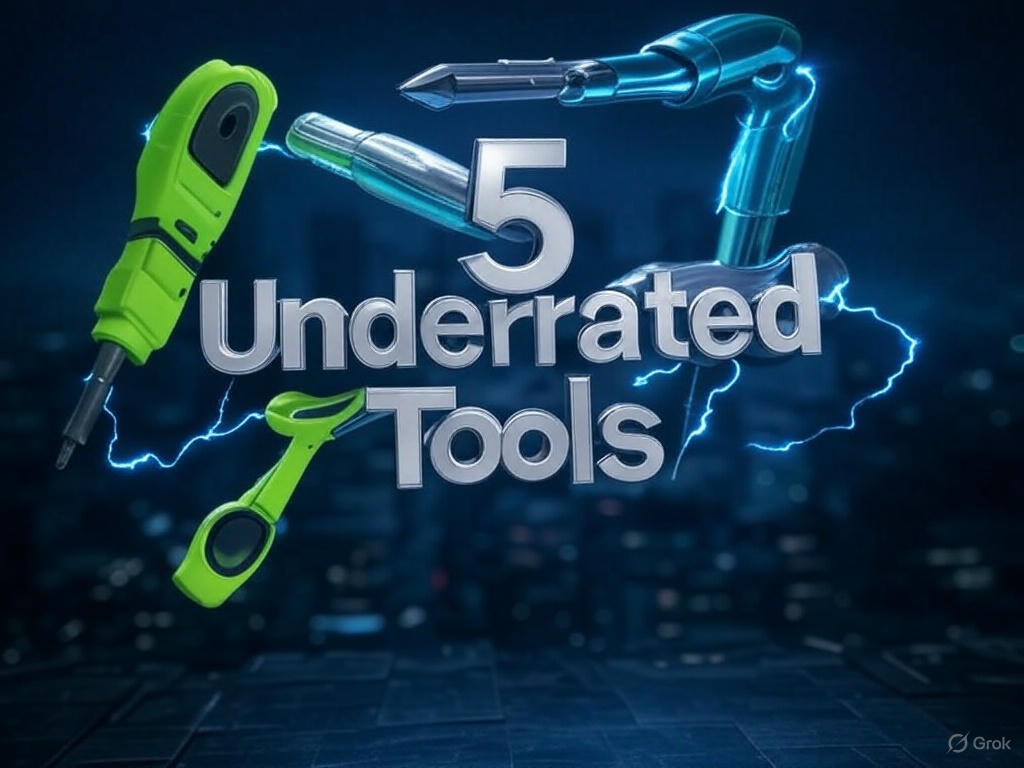
“These tools don’t get enough love, but they can make a huge difference.”
Not every content marketing tool has hype behind it. Some are quietly powerful and can save you hours each week or take your quality up a notch.
Here are five tools to explore if you’re serious about getting better, faster, and more strategic:
21. Descript
Editing video can be intimidating, but Descript makes it feel like editing a Word doc. It auto-transcribes your video and lets you cut or move parts of it just by deleting words.
Best for:
- Repurposing webinars or podcasts into clips
- Editing YouTube content
- Creating video summaries for social posts
22. Jasper
This is an AI writing tool that can help you brainstorm outlines, draft captions, or create content quickly — but with your input.
Use responsibly for:
- Getting out of a creative block
- Writing faster without losing your voice
- Generating ideas based on tone or keywords
Jasper isn’t a replacement for your voice — it’s a good sidekick when used right.
23. Clearscope
If you want your content to rank better on Google, Clearscope shows you which keywords and phrases to include — based on top-ranking pages.
Why SEO teams love it:
- Real-time optimization
- Easy content grading system
- Makes SEO less guesswork, more science
24. SurferSEO
Similar to Clearscope, Surfer helps align your content with what’s already working on search engines.
Helpful for:
- Writing content briefs
- Optimizing existing blog posts
- Planning SEO-friendly outlines
25. Loom
A quick way to explain ideas, walk through briefs, or give feedback — just record your screen and voice, and share the link.
Use Loom for:
- Reviewing drafts with teammates
- Giving instructions without a long meeting
- Personalized outreach
Also Read: 20 Best YouTube SEO Tools
Smart Habits for Smarter Tool Use
Having all the tools in the world won’t help if you don’t have a system. Here are some habits to build around your tools:
- Document your content strategy. Keep it somewhere like Notion or Google Docs.
- Batch your content creation. Write or design 4–5 pieces at once instead of one at a time.
- Automate where you can. Use Zapier or built-in automations in tools like Mailchimp or HubSpot.
- Centralize your assets. Logos, brand colors, templates — keep them all in one shared folder.
- Review your toolset every quarter. Drop what you don’t use, upgrade what you outgrow.
- Track results. Set up a dashboard in Google Looker Studio (or even Google Sheets) to keep tabs on performance.
Also Read: Top Performance Marketing Tools to Maximize ROI
Want to Learn These Tools Hands-On?

At Young Urban Project, we don’t just talk about tools — we teach you how to use them in real campaigns. Our live sessions are structured to help you:
- Understand how each tool fits into real workflows
- Practice using tools like Canva, SEMrush, Hootsuite, and Ahrefs.
- Get expert feedback while applying them to your own business or portfolio
If you’re ready to upskill with real, job-ready experience, check out our Digital Marketing Courses → Live Advanced Digital Marketing Course
Final Thoughts
Tools can speed you up, simplify your workflow, and even unlock creativity -but they’re not magic.
You still need a strong strategy. You still need consistency. And you still need to stay curious and willing to learn.
Find the tools that actually support your way of working. And then build a system that’s sustainable, measurable, and adaptable.
FAQs: Content Marketing Tools
1. What is the most important tool for a content marketer in 2025?
There isn’t just one tool that does it all. Most marketers rely on a mix, like HubSpot to manage campaigns, Canva to design posts, and Ahrefs for SEO. What matters most is picking tools that fit how you work and what you want to achieve.
2. Can I manage a content marketing strategy with free tools?
Absolutely. Tools like Trello, Google Analytics, and Canva have free versions that are great for getting started. If you have a clear plan and stay consistent, you can manage a lot without spending money. Just upgrade when your needs grow.
3. Which tools are best for SEO content creation?
Ahrefs, SEMrush, and SurferSEO are widely used to plan content that ranks on Google. They help you find what people are searching for and how to write in a way that works for search. If you use WordPress, Yoast is also really helpful.
4. How do I choose the right content marketing platform for my business?
Start by looking at your goals. Do you need email marketing, automation, or just a place to write and publish content? Bigger teams may go for HubSpot, while solo creators might prefer ConvertKit. Pick something that’s easy to use and fits your workflow.
5. What are some tools to improve content engagement on social media platforms?
Hootsuite and Buffer help you stay consistent with posting. Canva lets you design better-looking visuals. BuzzSumo shows what’s trending. Tools like these help you share better content more often, without always having to do it manually.
6. Are AI tools replacing human content marketers?
Not really. Tools like Jasper can help you write faster or get ideas, but they still need a human to shape the message. Great content comes from understanding people, which AI can’t fully do. Think of AI as support, not a replacement.

